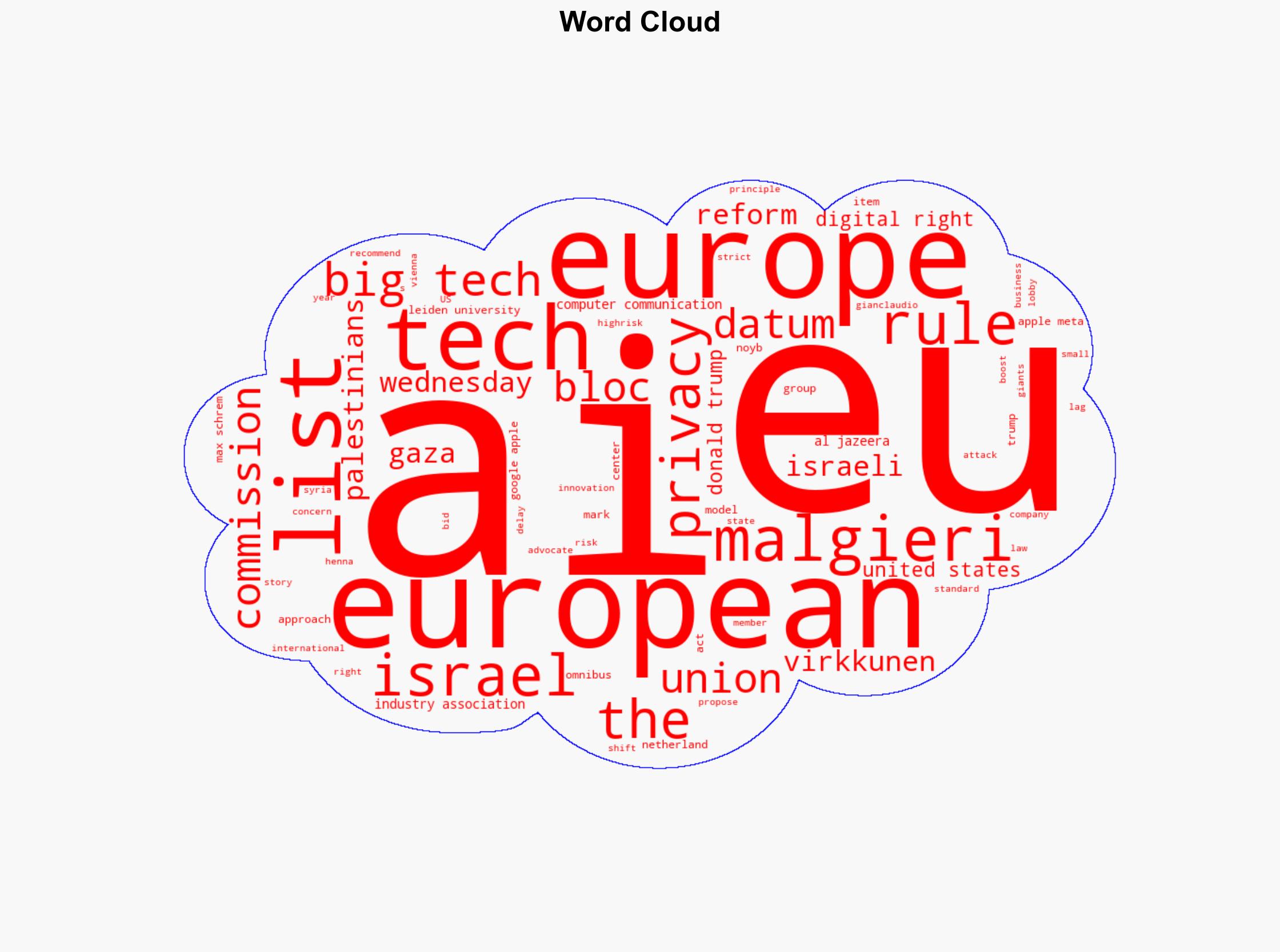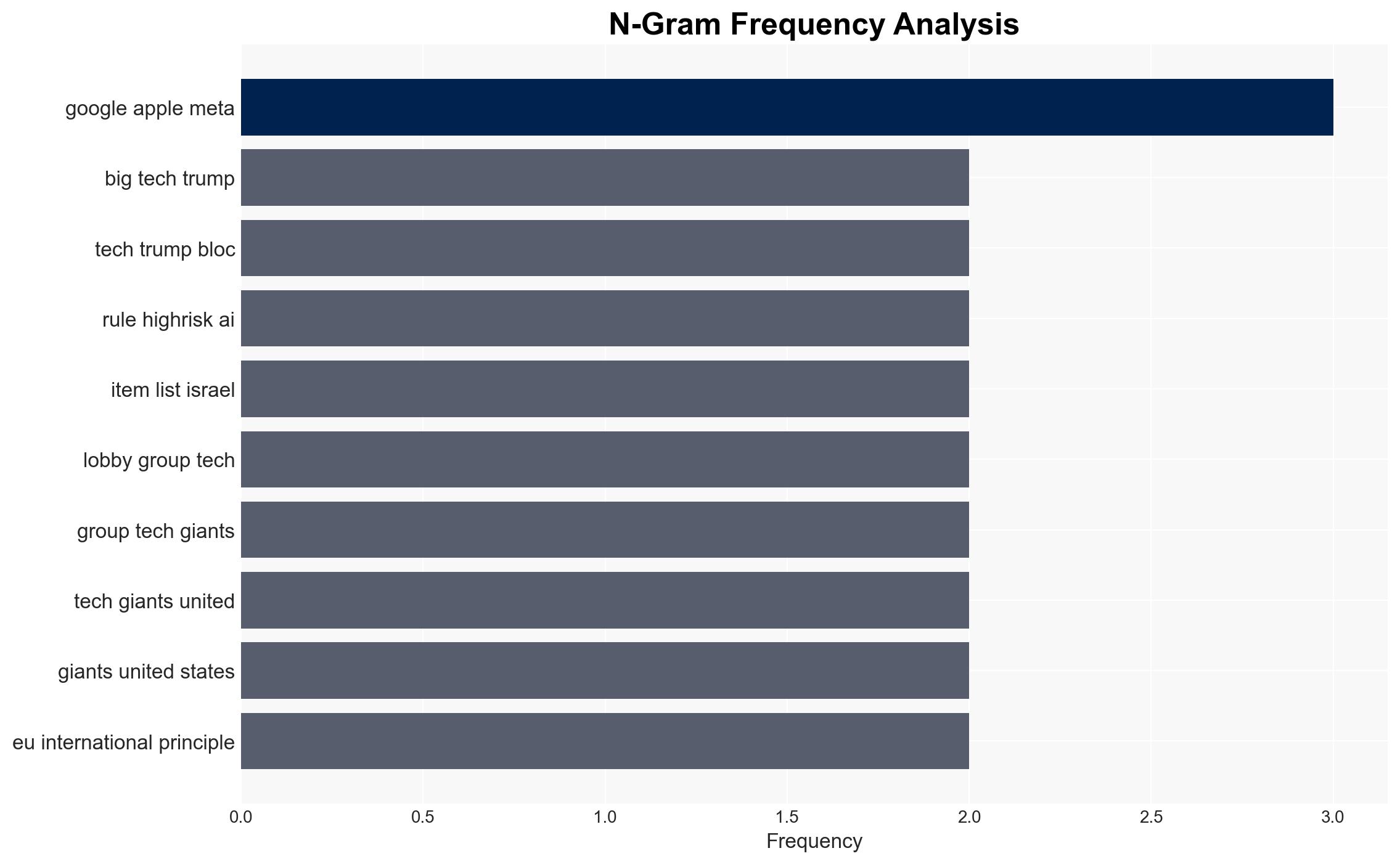EU moves to ease AI privacy rules amid pressure from Big Tech Trump – Al Jazeera English
Published on: 2025-11-20
AI-powered OSINT brief from verified open sources. Automated NLP signal extraction with human verification. See our Methodology and Why WorldWideWatchers.
Intelligence Report: EU AI Privacy Rule Reforms
1. BLUF (Bottom Line Up Front)
The European Union’s move to ease AI privacy rules is likely a strategic response to balance innovation and regulation under pressure from Big Tech, with a moderate confidence level. The most supported hypothesis is that the EU aims to enhance competitiveness while maintaining a degree of regulatory oversight. Recommended actions include monitoring the implementation of these reforms and engaging with stakeholders to ensure that privacy standards are not unduly compromised.
2. Competing Hypotheses
Hypothesis 1: The EU is easing AI privacy rules primarily to boost innovation and competitiveness in response to pressure from Big Tech and lagging behind in AI development.
Hypothesis 2: The EU’s reforms are a strategic concession to Big Tech, driven by lobbying efforts, potentially at the expense of privacy standards.
Hypothesis 1 is more likely as it aligns with the EU’s historical approach of balancing innovation with regulation, and the need to remain competitive in the global AI landscape. Hypothesis 2, while plausible, lacks direct evidence of undue influence from Big Tech.
3. Key Assumptions and Red Flags
Assumptions: The EU can effectively balance innovation and privacy. The reforms will not significantly erode privacy rights.
Red Flags: Strong lobbying from Big Tech could indicate potential bias in the reforms. Statements from privacy advocates suggest possible erosion of digital rights.
Deception Indicators: Public statements from EU officials may downplay the influence of Big Tech lobbying.
4. Implications and Strategic Risks
The easing of AI privacy rules could lead to increased innovation and competitiveness in the EU. However, there is a risk of backlash from privacy advocates and potential legal challenges if privacy standards are perceived to be compromised. This could escalate into political tensions within the EU and with international partners.
5. Recommendations and Outlook
- Engage with privacy advocates and tech companies to ensure balanced implementation of reforms.
- Monitor the impact of reforms on innovation and privacy standards.
- Best-case scenario: The EU successfully boosts innovation without compromising privacy.
- Worst-case scenario: Reforms lead to significant erosion of privacy rights and legal challenges.
- Most-likely scenario: A moderate increase in innovation with some privacy concerns addressed through ongoing dialogue.
6. Key Individuals and Entities
Henna Virkkunen, Max Schrems, Gianclaudio Malgieri, European Commission, Google, Apple, Meta.
7. Thematic Tags
Cybersecurity, AI Regulation, Privacy Rights, Big Tech Influence
Structured Analytic Techniques Applied
- Adversarial Threat Simulation: Model and simulate actions of cyber adversaries to anticipate vulnerabilities and improve resilience.
- Indicators Development: Detect and monitor behavioral or technical anomalies across systems for early threat detection.
- Bayesian Scenario Modeling: Quantify uncertainty and predict cyberattack pathways using probabilistic inference.
Explore more:
Cybersecurity Briefs ·
Daily Summary ·
Support us





